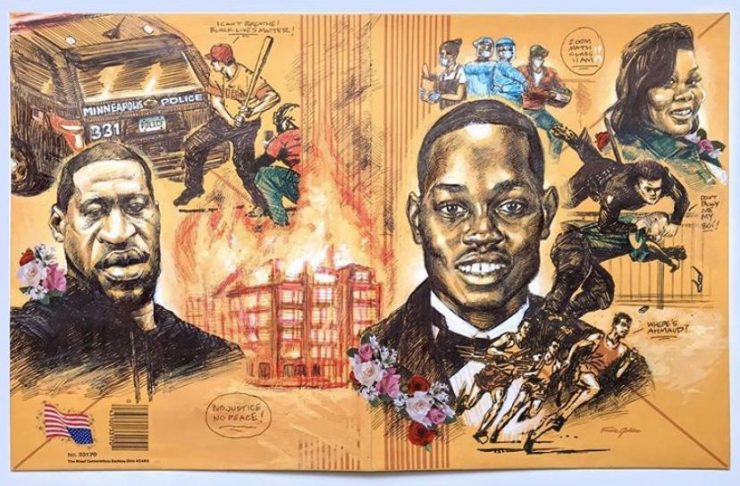In the spring of 2019, a group of Chapman University students approached the Escalette Collection with a specific request: to see and hear from artists they felt were underrepresented in the collection. Escalette Director at Chapman Lindsay Shen was eager to answer the call.
“We’re happy when students talk or write to us to point out gaps in the collection,” says Shen. “It means people are engaging with our work. It’s important to be humble, to look at the statistics and acknowledge that yes, there’s a problem with representation.”
Now, over a year later, the work of imbuing equity into the museum’s fabric continues. Alongside student and community support, the Escalette is doubling down on its commitment to create an inclusive collection.
We talked with Shen about the Escalette’s efforts to make these and other significant changes.
Can you talk about the efforts to build a more representative collection and what that means especially when we look more broadly at other prominent art institutions across the country.
As a museum community we’re all tackling the same problems. In general, the museum world is very eager to start to redress some of these imbalances. For us, it started with understanding what the problem actually was. We ran statistics in our collection, trying to understand what percent of art we have by women and from artists of color. Once we had done that analysis, then we had a better understanding of where to allocate money to addressing the imbalances in representation. Words are only the beginning. Yes, it’s important to express our solidarity with movements like Black Lives Matter but that’s just a start.
How does current data reflect the Escalette’s commitment to diversity and inclusion?
For the academic year 2020-2021, over half of new acquisitions were made by women artists and approximately 52% were made by artists from underrepresented ethnic or racial populations – which is well above what has historically been the case at almost all other museums or university collections.
What support have you received from the community that has been key in achieving your goals as they relate to diversity and inclusion?
In 2020, we shared with the Ellingson Family our desire to address the issue of having so few Black artists in the Escalette, and they were happy for us to allocate their gift to address the issue. We have since approved the addition of 13 new works by artists of color. It’s also important to say that we also benefit so much from the generosity of artists themselves. Last year during the summer, some of our Escalette artists produced work that they then auctioned or sold, and we bought some of those pieces. The proceeds of those sales went to COVID-19 relief, Black Lives Matters and other social justice initiatives.
How have Chapman students been involved in the Escalette’s goal of building an inclusive permanent collection?
The foundation of student involvement with the Escalette is the acknowledgement that this collection is for our students. It exists to inspire and sometimes to challenge and provoke. Since it’s for our students, it’s important they have a sense of ownership of this collection. Our current exhibition “Marking Black Memories” is a celebration of how involved our Chapman students are. They came to us and advocated for the inclusion of Ivan Forde and Rotimi Fani-Kayode Fanikoyote in the collection. Students are involved in every aspect of the collection. It’s a continuous collaboration.
At a time when we’re still grappling with social injustice on so many levels, what is the importance and the role of art in our everyday environment?
Art gives us different ways of knowing about the world. If we think back about what happened after the murder of George Floyd, it seemed very relevant that we saw so many artworks arising. In Minneapolis, where his death happened, there was a mural that emerged. In that moment, art helped people process what happened. We can read statistics about how many people die in police custody for example, and we can have that knowledge. But we can also look at the work of Patrick Martinez who does these peechee folders where he draws incidents of police brutality. And that is an entirely different way for us to understand that issue. Art is a means through which we can arrive at different kinds of knowledge and see the world from different perspectives.




